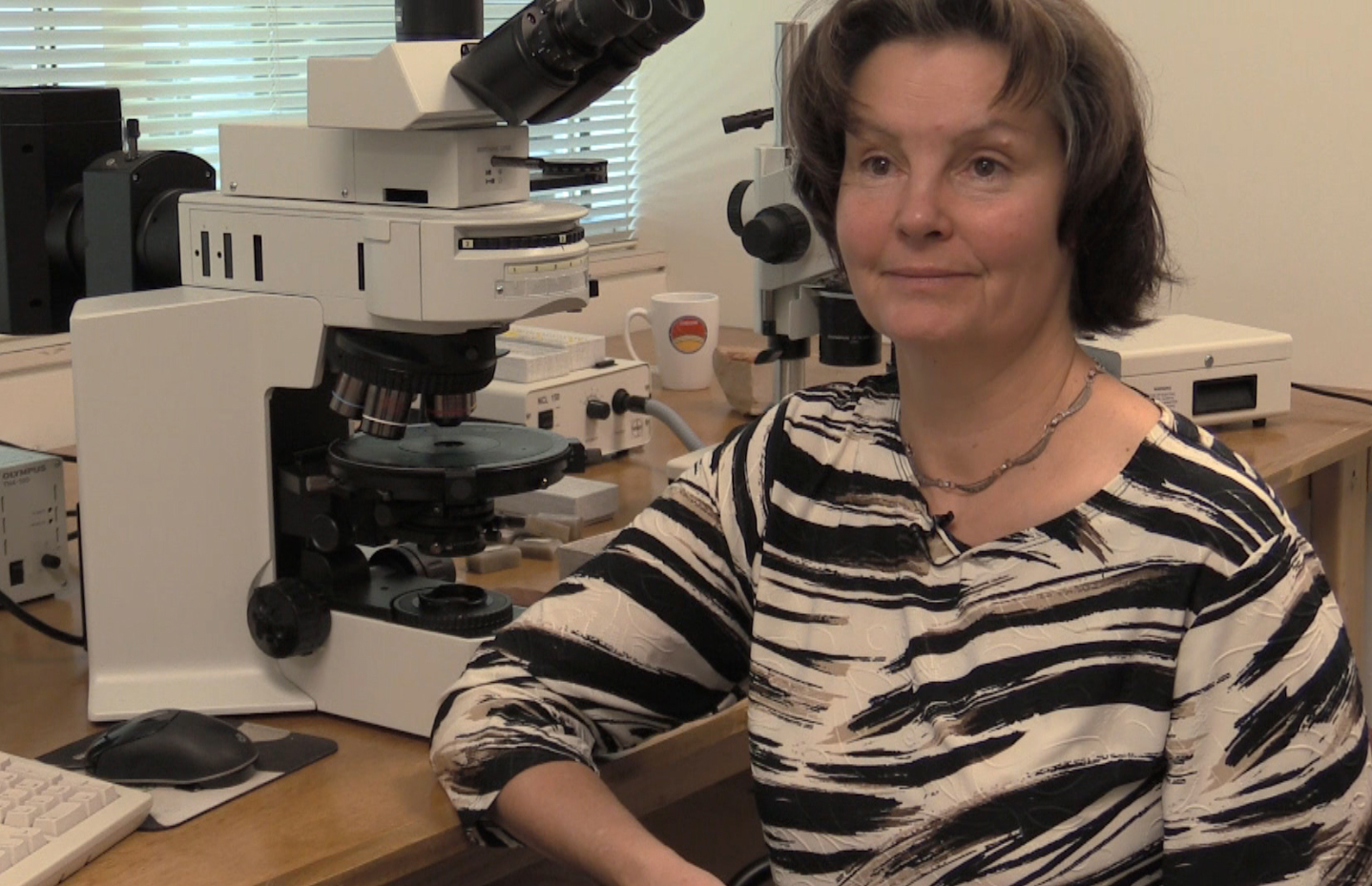Video Explains Noffke's Earliest Life Research
By Jim Raper
The research of Old Dominion geobiologist Nora Noffke indicating that life existed on earth 3.48 billion years ago is featured in a video report on YouTube. The video is the work of the ODU marketing and communication office.
Noffke has been the subject of news media stories worldwide after she published an article in November in the journal Astrobiology concerning the earliest life on Earth. Newspapers, magazines, online media and broadcast media have done stories about Noffke's work. Among the reports in the United States, CNN did a lengthy online article and Science magazine published a news note.
Noffke, who has won international recognition during the past decade for research establishing microbially induced sedimentary structures (MISS) as evidence of earliest life on Earth, is the lead author of the Astrobiology articles, which documents the discovery of 3.48-billion-year-old MISS, the oldest ever reported.
She and colleagues discovered these MISS in the Dresser Formation, Pilbara, Western Australia. They believe the structures could be the best and oldest evidence yet that microbes had colonized tidal pools on Earth during the early Achean period, which extends back 4 billion years. The structures - due to their age - might also provide scientists with clues about geologic evidence of microbial life that exists, or might have existed, on Mars.
Noffke's research in South Africa and Australia has turned up geological samples supporting her case that the mats woven of tiny microbes we see today covering tidal flats were also present as life was beginning on Earth. The mats, which are colonies of cyanobacteria, can cause unusual textures and formations in the sand beneath them. Noffke has identified 17 main groups of such textures caused by present-day microbial mats, and has found corresponding structures in geological formations dating back through the ages.
Authors of the Astrobiology article also include Daniel Christian, a graduate researcher at Old Dominion; David Wacey, Centre for Microscopy at the University of Western Australia; and Robert M. Hazen, of the Geophysical Laboratory at Carnegie Institution of Washington (D.C.).


